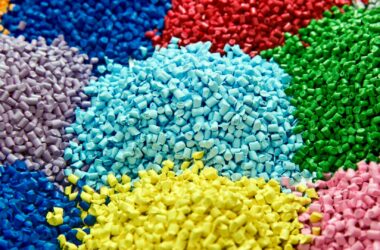Gum wet glue labeling is a widely employed method for labeling bottles, containers, and packaging in diverse industries, including food and beverage, pharmaceuticals, and cosmetics. While it offers exceptional adhesion and imparts a premium appearance to products, setting up an effective gum wet glue labeling process involves various challenges. This comprehensive technical note explores these challenges in-depth and provides robust solutions to ensure a seamless and efficient labeling operation.
Challenges:
1. Adhesive Selection:
- Challenge: The critical task of selecting the right adhesive that offers strong adhesion to both the label material and the substrate without causing issues like wrinkles, bubbles, or label lift-off.
- Solution: Conduct thorough adhesive compatibility tests encompassing various label materials and substrates to pinpoint the most suitable adhesive for the specific application.
2. Label Material:
- Challenge: Choosing label materials that are not only compatible with wet glue labeling but also capable of withstanding environmental conditions such as moisture and temperature variations.
- Solution: Opt for label materials explicitly designed for wet glue labeling, and consider additional measures like lamination or coating to enhance durability.
3. Labeling Machine Setup:
- Challenge: Ensuring the labeling machine is configured correctly to facilitate consistent label placement, prevent misalignment, and minimize downtime.
- Solution: Establish a regular calibration and maintenance schedule for labeling machines, ensuring they meet the specific requirements for wet glue labeling. Comprehensive operator training is essential for optimal performance.
4. Labeling Speed and Throughput:
- Challenge: Striking the right balance between achieving high labeling speed and maintaining label quality, all while minimizing wastage.
- Solution: Fine-tune labeling machine settings and production line speed to achieve the desired equilibrium, ensuring that errors are kept to a minimum.
5. Drying Time:
- Challenge: Allotting sufficient drying time for the labels to set without impeding production speed.
- Solution: Leverage specialized drying tunnels or systems designed for wet glue labels, and fine-tune drying parameters based on label and adhesive specifications to optimize drying efficiency.
6. Quality Control:
- Challenge: Ensuring a consistently high level of label adhesion while preventing defects such as label wrinkles, air bubbles, and incomplete gluing.
- Solution: Implement a stringent quality control regimen that includes visual inspections at critical points in the labeling process. This proactive approach allows for early detection and resolution of potential labeling defects.
7. Environmental Considerations:
- Challenge: Effectively managing adhesive waste, which may contain volatile organic compounds (VOCs), while adhering to environmental regulations.
- Solution: Explore the adoption of eco-friendly adhesives with reduced VOC content. Additionally, implement a comprehensive waste management and recycling program for adhesive residues and label materials to minimize environmental impact.
Solutions:
1. Conduct Thorough Testing:
- Perform extensive compatibility tests with various label materials, adhesives, and substrates to identify the most effective combination for your specific application.
2. Invest in Quality Labeling Equipment:
- Opt for reliable labeling machines explicitly designed for wet glue applications, and ensure they undergo regular maintenance to guarantee optimal performance.
3. Provide Comprehensive Operator Training:
- Empower operators with in-depth knowledge of the intricacies of gum wet glue labeling and equip them with the skills needed to operate machinery efficiently.
4. Continuously Optimize Production Processes:
- Monitor and adjust labeling machine settings on an ongoing basis to maximize labeling speed while upholding quality standards.
5. Implement Rigorous Quality Control:
- Introduce visual inspections and quality control checkpoints at critical stages of the labeling process to catch and rectify potential labeling defects before they impact the final product.
6. Prioritize Environmental Responsibility:
- Explore eco-friendly adhesive options and adopt responsible waste management practices to minimize the environmental footprint of your labeling process.
In conclusion, establishing an effective gum wet glue labeling process demands a comprehensive approach that addresses adhesive selection, label materials, machine setup, production speed, drying time, quality control, and environmental considerations. By meticulously tackling these challenges with the provided solutions, manufacturers can lay the foundation for a reliable and efficient labeling operation that yields high-quality labeled products while minimizing waste and environmental impact.







